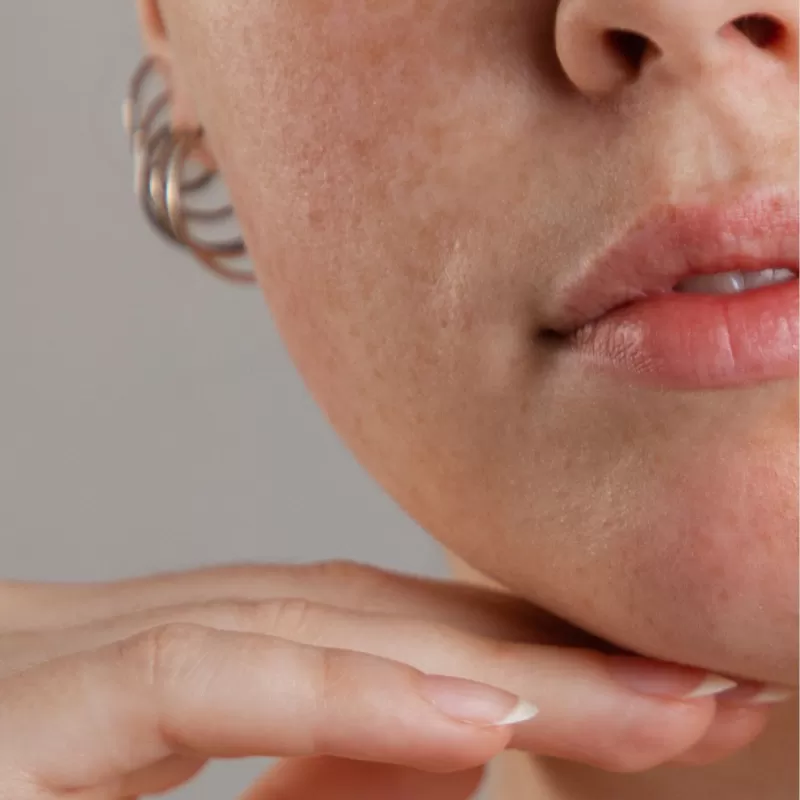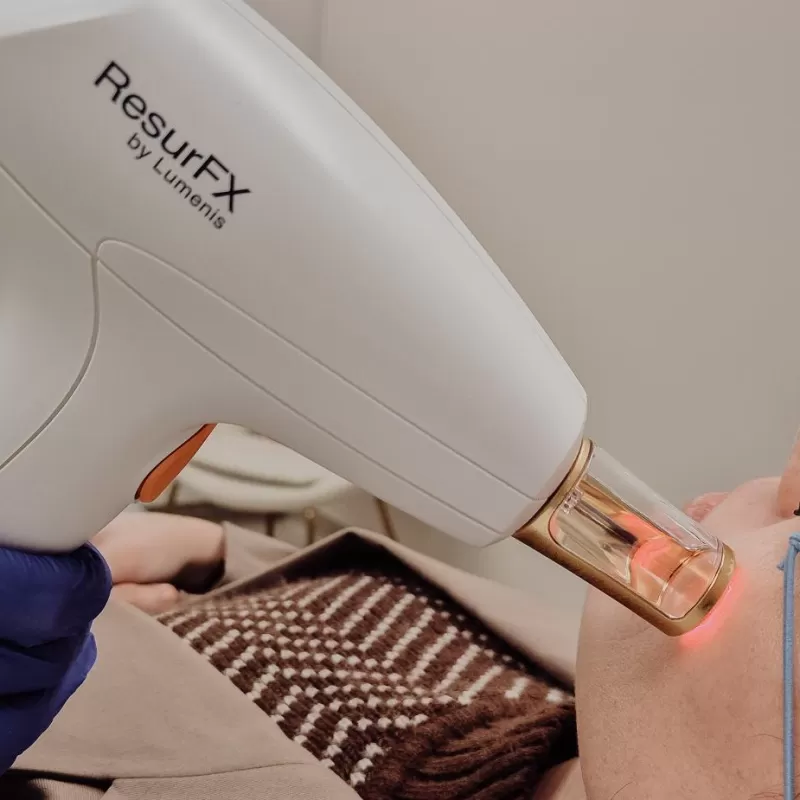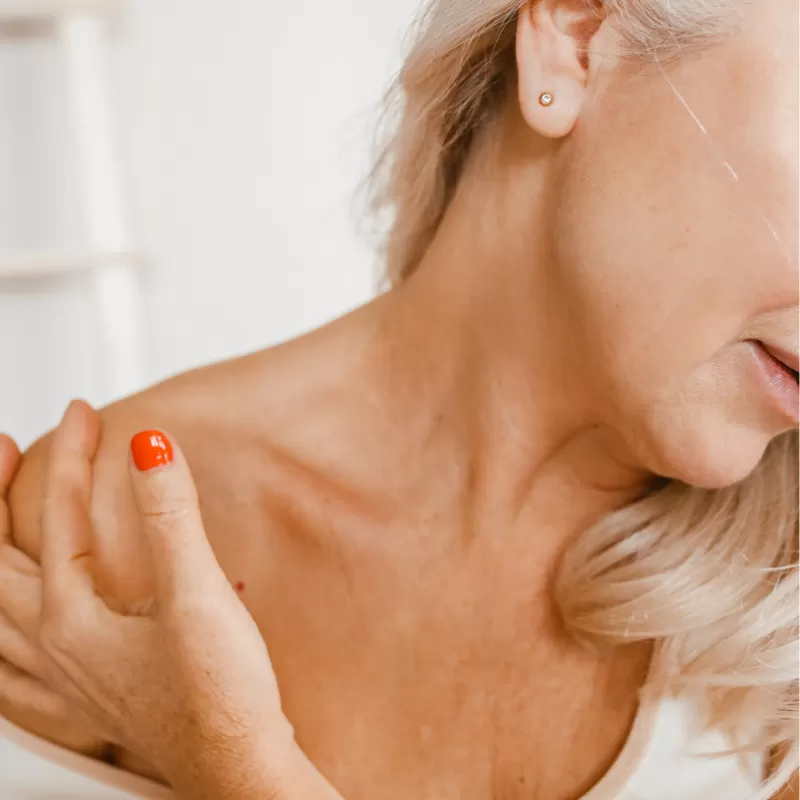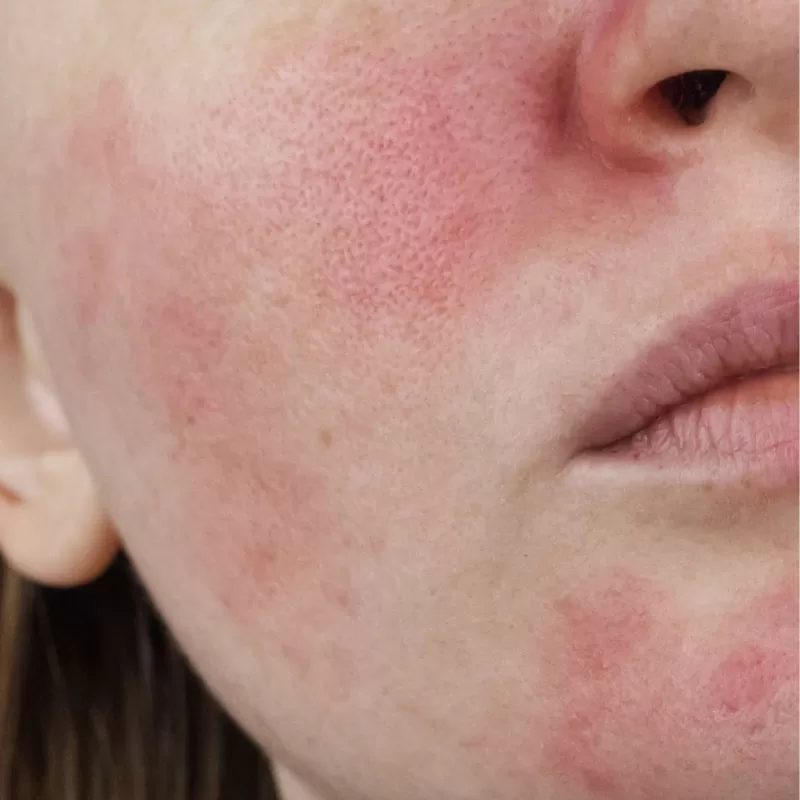Rosacea and Broken Blood Vessels
Rosacea and Broken Blood Vessels
Rosacea and Broken Blood Vessels
Condition
Respond to red skin and rosacea with our experienced team at The R Clinic. With our expertise you can find the right treatment to manage your red patchy skin, helping you to put your best skin forward.
What is Rosacea and Broken Blood Vessels?
What is Rosacea and Broken Blood Vessels?
Red skin on the face and broken capillaries can be caused by several conditions however one of the most common is rosacea. Rosacea is an extremely common but complex condition affecting many people.
Rosacea causes a persistent red flushed face and visible blood vessels on the skin, typically on the cheeks, forehead, chin and red around nose. While these spidery, reddish blemishes aren’t harmful, they can stand in the way of that clear, glowing complexion you’re looking for.
What causes Rosacea and Broken Blood Vessels?
What causes Rosacea and Broken Blood Vessels?
Unfortunately, the cause of rosacea is largely unknown, however it is believed it is a combination of genes, environment, demodex mites (microscopic organisms found in your sebaceous glands) and an overly active immune system.
Lifestyle choices and habits such as the types of food choices, skincare ingredients, alcohol consumption and sun exposure all contribute to further inflammation of rosacea.
Other factors that may worsen facial redness and broken facial blood vessels (capillaries) include trauma, older age, genetics, hormones, and harsh environmental conditions like sun and wind.
How can we help?
How can we help?
Treating rosacea requires a holistic approach managed by a trained practitioner. As there is no cure for rosacea, you need experienced guided support for your skin and a comprehensive look at your lifestyle and habits.
Rosacea needs to be managed over a long period of time, where you need a committed team and well-thought-out management. With the right help, products, treatments and lifestyle choices, the appearance of rosacea can be greatly controlled.
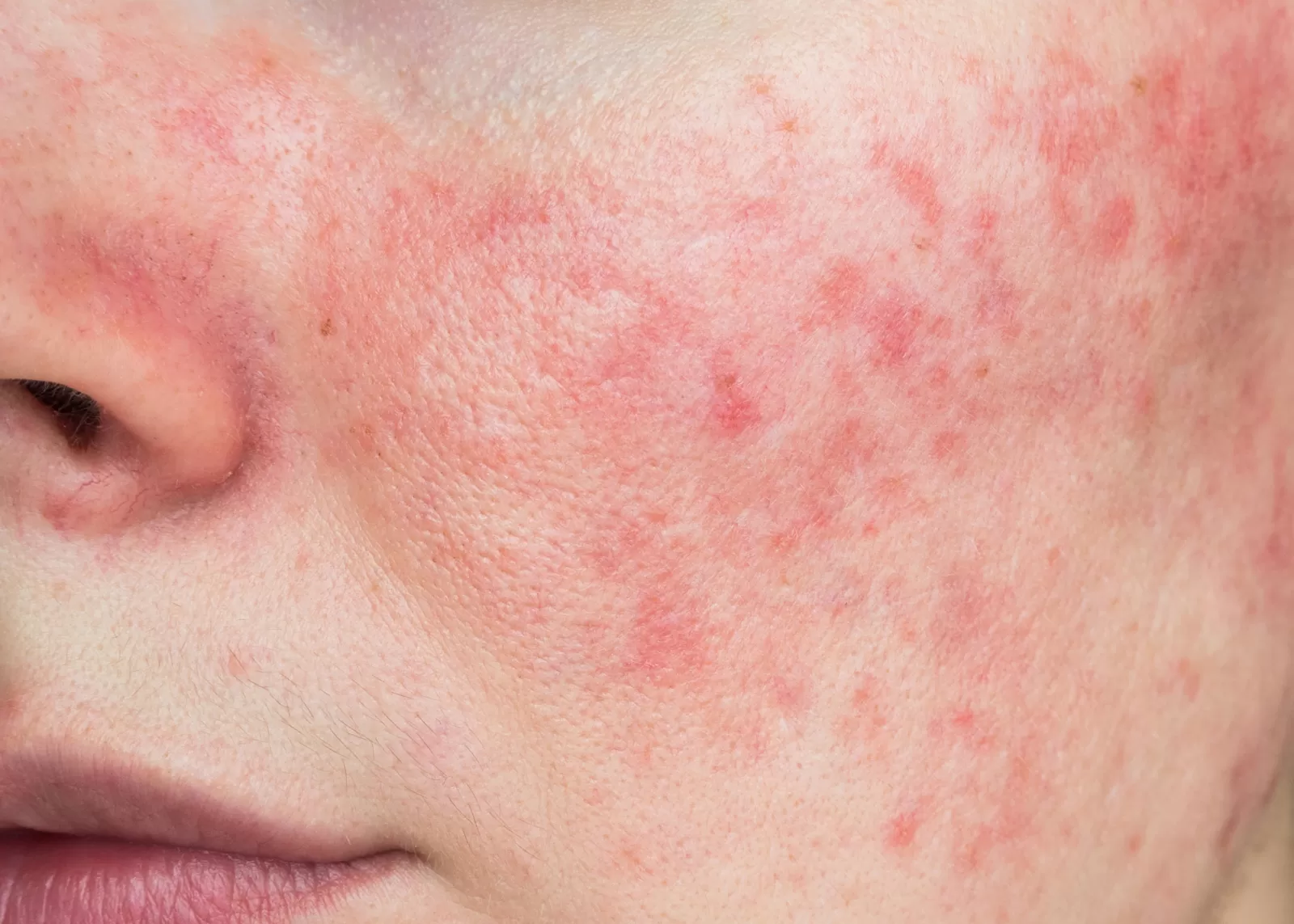
FAQ
Have further questions or want to learn more?
What are the different types of rosacea?
There are four types of rosacea:
- Erythematotelangiectatic rosacea: This includes flushing, redness, and dilated blood vessels.
- Papulopustular rosacea: The acne type of rosacea commonly associated with redness, sensitive skin and breakouts.
- Phymatous rosacea: Typically includes a bumpy skin texture, enlarged pores and a thickening of the skin.
- Ocular rosacea: Affects your eye area including the eyes and eyelids, which can make them feel irritated, dry, and itchy. This type of rosacea may even lead to issues with vision.
What are the signs and symptoms of rosacea?
Rosacea’s appearance can vary greatly from one individual to another. Most of the time, not all of the potential signs and symptoms appear. Rosacea always includes at least one of the primary signs listed below. Various secondary signs and symptoms might also develop.
Primary signs of rosacea include flushing, persistent redness, bumps and pimples, visible blood vessels. Other potential signs and symptoms include eye irritation, burning sensation on the face, skin thickening.
Who is likely to get rosacea?
People who have fair skin and who tend to blush easily might be at a higher risk for the disorder. Adults over the age of 30 are more likely to be affected, although rosacea occasionally occurs in adolescents and rarely in children. A family history of rosacea increases the likelihood of the disorder.
Rosacea appears more often among women, but men tend to have the more severe symptoms. A possible reason for this could be that men delay medical treatment until rosacea becomes advanced.
What are the most common lifestyle and environmental factors that aggravate rosacea?
Research suggests the most common rosacea triggers include sun exposure, emotional stress, hot or cold weather, wind, alcohol, spicy foods, heavy exercise, hot baths, heated beverages, and certain skin-care products.
Does rosacea get worse overtime?
Rosacea is a progressive condition, so it will get worse over time if left untreated. This is why it’s important to be diagnosed by a healthcare professional and begin to regain control of your skin. As your skin becomes more stressed and prone to flare ups, the capillaries weaken, which means they are more visible, which then results in permanent redness.
Does rosacea cause facial swelling, burning, or itching?
Facial burning, stinging and itching are commonly reported by many rosacea patients. Certain rosacea sufferers may also experience some swelling (edema) in the face that may become noticeable as early as the initial stage of the disease. The same flushing that brings on rosacea’s redness can be associated with a build-up of fluid in the tissues of the face. It often occurs above the nasolabial folds and can cause a “baggy cheek” appearance. It is also believed that in some patients this swelling process may contribute to the development of excess tissue on the nose (rhinophyma), causing it to become bulbous and bumpy.
Can you prevent rosacea?
As the cause of rosacea is not known, the condition cannot be prevented. However, rosacea sufferers can improve their chances of maintaining remission by identifying and avoiding lifestyle and environmental factors that aggravate individual conditions or trigger rosacea flare-ups. Some triggers include:
- Sun/wind exposure.
- Emotional stress.
- Hot/cold weather.
- Heavy exercise.
- Alcohol consumption.
- Hot baths/beverages.
Can rosacea be cured?
While rosacea cannot be cured, however with the right medical treatments that are available, rosacea can be controlled or help to eliminate its various signs and symptoms.

